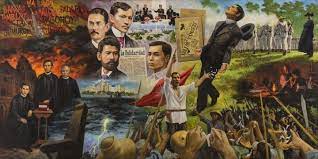- Teacher: Evelyn Talamayan Saribay
- Teacher: Girlie Damasco
- Teacher: MARK JOHN RAPANAN
The course aims to expose students to different facets of Philippine history through the lens of eyewitnesses. Rather than rely on secondary materials such as textbooks, which is the usual approach in teaching Philippine history, different types of primary sources will be used- written (qualitative and quantitative), oral, visual, audio-visual, digital- covering various aspects of Philippine life (political, economic, social and cultural). Students are expected to analyze the selected readings contextually and in terms of contents (stated and implied). The end goal is to enable students to understand and appreciate our rich past by deriving insights from those who were actually present at the time of event.
Context analysis considers the following: i) the historical context of the source (time and place it was written and the situation at the time, ii) the author’s background, intent ( to the extent discernable), and authority on the subject; and iii) the source’s relevance and meaning today.
Content analysis on the other hand, applies appropriate techniques depending on the type of sources (written, oral visual). In the process, the students will be asked, for example, to identify the author’s main argument or thesis, compare points of view, identify biases, and evaluate the author’s claim based on the evidence presented or other available evidence at the time. The course will guide the students through their readings and analysis of the texts and require them to write reaction essays of varied length and present their ideas in other ways(debate format, power point presentation, letter to the editor of the source).

- Teacher: Jamaica Mae Reyes Figueras